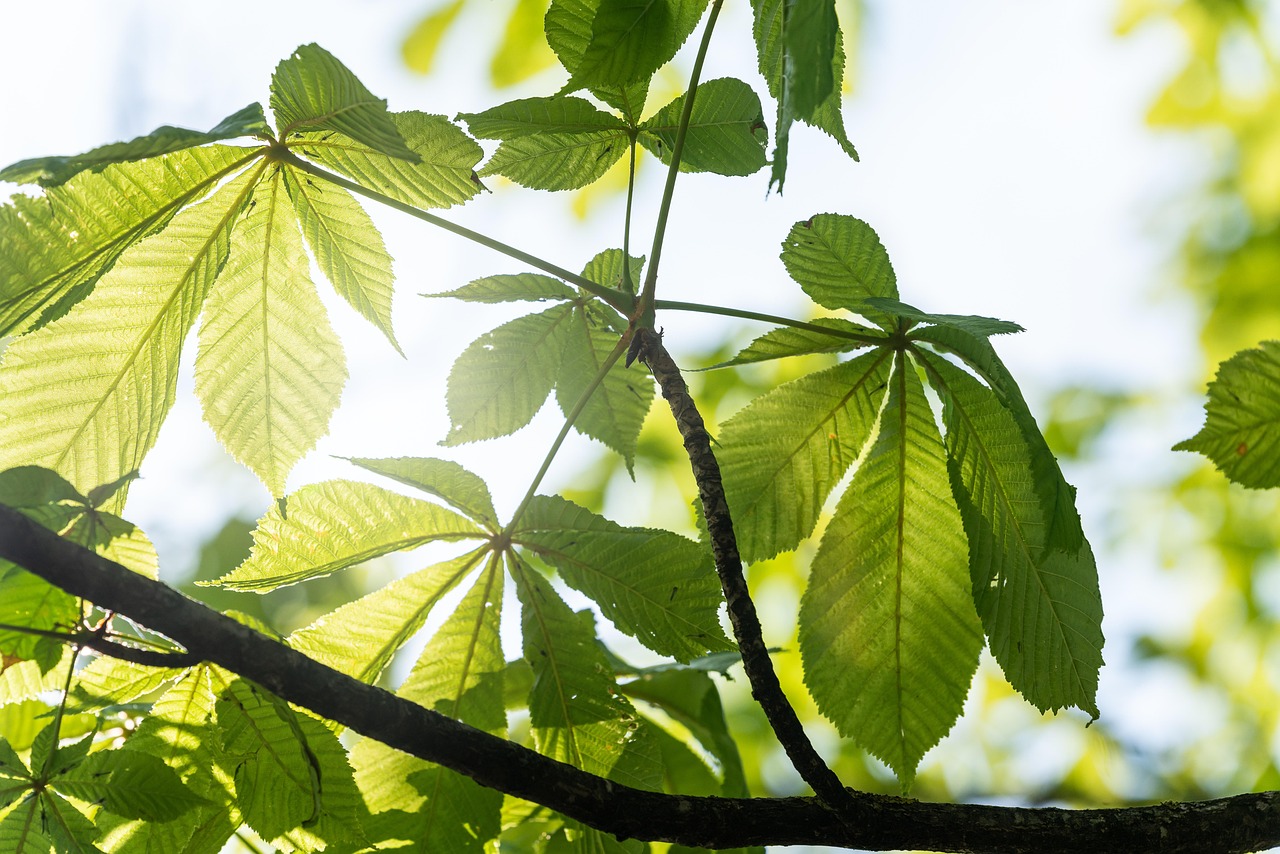Tree growth rates are influenced by several factors, including genetics, environmental conditions, soil quality, water availability, and climate. Understanding these elements is crucial for optimizing tree health and development.
Trees play a vital role in our ecosystem. They provide oxygen, improve air quality, and offer habitat for wildlife. However, the rate at which trees grow can vary significantly based on various factors. Identifying these factors helps in enhancing tree growth and ensuring sustainable forestry practices.

Among the most critical factors affecting tree growth rate are:
- Genetics: Different species of trees have inherent growth rates determined by their genetic makeup.
- Soil Quality: Nutrient-rich soils promote faster growth. Soil pH and composition also play roles.
- Water Availability: Adequate moisture is essential for photosynthesis and nutrient uptake.
- Light Conditions: The amount of sunlight received affects photosynthesis and energy production.
- Climate: Temperature and weather patterns influence growth cycles.
Factors Influencing Tree Growth Rate
Understanding the specific factors that influence tree growth is vital for foresters, gardeners, and environmentalists alike. Each factor interacts in complex ways, impacting overall tree health and growth rate.
Genetic Factors
The genetic makeup of a tree species determines its growth potential. For instance, some species are naturally fast-growing, while others grow slowly. This inherent trait influences how quickly a tree can reach maturity. In forestry, selecting the right species for planting can lead to better yield and productivity.

Soil Quality
The quality of the soil in which a tree is planted significantly affects its growth. Trees require a variety of nutrients to thrive. The following table outlines essential nutrients and their roles in tree development:
| Nutrient | Role in Growth |
|---|---|
| Nitrogen | Essential for leaf and stem growth; promotes lush foliage. |
| Phosphorus | Supports root development and flower/fruit formation. |
| Potassium | Enhances overall plant health; aids in disease resistance. |
| Calcium | Important for cell structure and growth regulation. |
The soil’s texture, structure, and pH level can also affect how well trees can absorb these nutrients. Sandy soils may drain too quickly, while clay soils might retain too much moisture, creating an imbalance that stunts growth.
Water Availability
Water is a critical component of photosynthesis, the process by which trees convert sunlight into energy. Insufficient water supply can slow down growth significantly. Conversely, overwatering can lead to root rot and other issues that harm a tree’s health. Trees require a balance of moisture to thrive.

Light Conditions
Light is another essential factor affecting tree growth. Trees that receive adequate sunlight tend to grow faster due to enhanced photosynthesis. In densely populated forests, competition for light can hinder the growth of smaller trees. Pruning and managing tree spacing can help ensure all trees receive sufficient light for optimal growth.
Climate
The climate in which a tree is planted plays a significant role in its growth rate. Trees need specific temperature ranges to thrive. Extreme temperatures can cause stress and slow growth. Additionally, seasonal changes affect the growth cycle. For example, trees may enter dormancy during colder months, halting growth until conditions improve.
By understanding these various factors, individuals and organizations can make informed decisions about tree planting and care. This knowledge is essential for promoting healthy forests and ensuring sustainable practices in forestry and landscaping.
Environmental Factors Affecting Tree Growth
In addition to genetic and climatic factors, various environmental aspects play a crucial role in determining tree growth rates. These include elevation, topography, and the presence of other vegetation. Understanding these elements can aid in selecting suitable planting sites and improving tree health.

Elevation and Topography
The elevation at which a tree is planted can significantly influence its growth. Trees at higher elevations may face harsher weather conditions, such as lower temperatures and increased wind exposure. These factors can slow growth rates and affect overall health. Additionally, slope and aspect (the direction a slope faces) can impact sunlight exposure and moisture retention.
For instance, south-facing slopes typically receive more sunlight, promoting faster growth compared to north-facing slopes that may remain shaded for longer periods. Furthermore, the following points summarize how topography affects tree growth:
- Soil Drainage: Flat areas may retain more water while steep slopes can promote faster drainage.
- Microclimates: Variations in temperature and humidity can occur even within small geographic areas.
- Wind Exposure: Trees on ridges or open areas may face stronger winds, which can damage branches and affect growth.
Competition from Other Vegetation
Trees do not grow in isolation. The presence of other plants can influence their growth rates. Competition for resources such as light, water, and nutrients plays a significant role in how well a tree develops. In dense forests, young trees often struggle to compete with larger trees for sunlight. This competition can lead to slower growth rates and even mortality if resources are scarce.
Some key points to consider regarding competition include:
- Species Composition: Different species have varying growth rates and resource needs, which can affect competition dynamics.
- Density of Planting: High-density planting can lead to increased competition, while lower densities may promote faster growth.
- Invasive Species: Non-native plants can outcompete native trees for resources, hindering their growth.
Pest and Disease Impact
Pests and diseases are significant threats to tree health and growth. Infestations can weaken trees, making them more susceptible to other stressors. Healthy trees are generally more resilient; however, when stressed by poor growing conditions or competition, they become more vulnerable to pests.
The impact of pests and diseases on tree growth can be summarized as follows:
- Root Damage: Pests like root weevils can damage the root system, limiting water and nutrient uptake.
- Foliage Damage: Insect infestations can reduce photosynthetic capacity by damaging leaves.
- Disease Spread: Fungal infections can cause significant health issues leading to stunted growth or death.
Soil Water Retention and Quality
The ability of soil to retain water is paramount for tree growth. Trees require consistent moisture for optimal nutrient uptake. Soil types influence water retention capabilities; for example, sandy soils drain quickly but hold less moisture, while clay soils retain water but may become compacted.
A table below outlines different soil types along with their characteristics regarding water retention:
| Soil Type | Water Retention | Nutrient Content |
|---|---|---|
| Sandy Soil | Poor | Low |
| Silty Soil | Moderate | Moderate |
| Clay Soil | High | High |
| Loamy Soil | Good | High |
The ideal soil for tree growth is loamy soil, which balances moisture retention with nutrient availability. Proper soil management practices can enhance growth and development rates by improving soil structure and fertility.
By assessing these environmental factors, land managers and homeowners can create optimal conditions for tree growth. Selecting the right location for planting and maintaining healthy ecosystems are essential for successful tree development.
Human Influence on Tree Growth Rates
Human activities greatly impact the growth rates of trees. From urban development to agricultural practices, various factors associated with human intervention can either enhance or hinder tree development. Understanding these influences is essential for sustainable forestry and effective land management.
Urbanization and Land Use Changes
Urbanization involves the expansion of cities and towns, which often leads to habitat destruction and changes in land use. As forests are cleared for construction or agriculture, the remaining trees may face altered conditions that affect their growth. The following points highlight key aspects of urbanization’s impact on tree growth:
- Soil Compaction: Construction activities can compact soil, reducing its porosity and water infiltration, which adversely affects root growth.
- Pollution: Air and soil pollution can lead to poorer tree health, impacting growth rates. Pollutants can interfere with photosynthesis and nutrient absorption.
- Heat Islands: Urban areas often create heat islands, where temperatures are higher than surrounding areas. This can stress trees that are not adapted to such conditions.
Agricultural Practices
Agricultural practices, including the use of fertilizers and pesticides, can influence tree growth rates dramatically. While some practices aim to enhance growth, they can also have unintended negative consequences. Consider the following:
- Fertilizer Usage: Fertilizers can boost nutrient availability and promote faster growth. However, over-fertilization can lead to nutrient runoff and soil degradation.
- Pesticide Application: While pesticides protect trees from pests, they may also harm beneficial insects and disrupt local ecosystems.
- Monoculture Planting: Growing a single species over large areas can lead to increased susceptibility to disease and pest outbreaks, ultimately affecting growth rates.
Sustainable Forestry Practices
Adopting sustainable forestry practices can positively influence tree growth rates while minimizing negative impacts on the environment. These practices focus on balancing ecological health with economic needs. Here are some effective strategies:
- Selective Logging: Instead of clear-cutting, selective logging allows for the removal of specific trees while preserving the overall forest structure, promoting healthier growth.
- Reforestation: Planting new trees in deforested areas helps restore ecosystems and enhances carbon sequestration.
- Thinning: Reducing tree density in a forest can improve light access and reduce competition for resources, leading to improved growth rates for remaining trees.
Climate Change Impacts
Climate change poses significant challenges to tree growth rates worldwide. The changing climate affects temperature, precipitation patterns, and the frequency of extreme weather events. The following effects are particularly noteworthy:
- Increased Temperatures: Rising temperatures can accelerate growth in some species but may also increase stress levels, leading to slower growth or mortality in others.
- Altered Rainfall Patterns: Changes in rainfall can lead to droughts or flooding, both of which can negatively impact tree health and growth rates.
- Pest Outbreaks: Warmer climates may enable pests to thrive, leading to increased infestations that hinder tree growth.
Community Involvement and Education
Engaging communities in tree planting and care initiatives can significantly influence local tree growth rates. Educating the public about the importance of trees fosters a sense of responsibility towards maintaining healthy forests. Key community strategies include:
- Tree Planting Events: Organizing community events to plant trees helps raise awareness and encourages participation in environmental stewardship.
- Workshops and Seminars: Providing educational resources on tree care and sustainable practices empowers individuals to make informed decisions about their local environments.
- Collaboration with Local Governments: Partnering with local authorities can help secure resources for urban forestry projects and conservation efforts.
By recognizing the various ways human influence shapes tree growth rates, we can work towards creating a more sustainable relationship with our environment. Implementing strategies that mitigate negative impacts while promoting healthy tree development is essential for future generations.
Future Considerations for Tree Growth and Management
As we look to the future, several considerations become increasingly important for managing tree growth effectively. The integration of technology, research advancements, and adaptive management strategies may play a vital role in promoting healthier forests.
Technological Innovations
Emerging technologies can greatly enhance our understanding and management of tree growth rates. The following innovations are noteworthy:
- Remote Sensing: This technology allows for the collection of data on forest health and growth patterns from satellites or drones. This information can help in assessing tree density, health, and biomass.
- Genomic Research: Advances in genetics can help identify tree species with desirable growth traits. This knowledge can guide reforestation efforts and species selection for specific environments.
- Climate Modeling: Sophisticated models can predict how climate change will affect tree growth rates, allowing for proactive planning and management.
Research and Education
Ongoing research is crucial for understanding the complexities of tree growth. Collaborations between universities, forestry organizations, and government agencies can lead to significant discoveries. Key areas of focus include:
- Soil Health: Research into soil microbiomes and their impact on tree growth can lead to better soil management practices.
- Pest Management: Understanding pest populations and their interactions with trees can inform more effective and sustainable pest control methods.
- Climate Resilience: Studies on how different tree species respond to climate stressors can help in selecting appropriate species for future planting efforts.
Adaptive Management Strategies
Adapting tree management practices based on ongoing observations and research findings is essential for maintaining healthy forests. Adaptive management involves:
- Monitoring Growth Rates: Regular assessments of tree growth can help identify any emerging issues early on, allowing for timely interventions.
- Flexible Practices: Management strategies should be adaptable to changing environmental conditions, including shifts in climate and pest populations.
- Community Engagement: Involving local communities in monitoring and decision-making ensures that management practices are grounded in local knowledge and needs.
Conclusion
The factors influencing tree growth rates are multifaceted, encompassing genetic, environmental, and human influences. By understanding these components, we can make informed decisions to promote healthy and sustainable tree development. From soil quality to climate impacts, each element plays a significant role in determining how trees thrive.
Moreover, the integration of technology and ongoing research will be vital for enhancing our strategies for tree management. Community involvement and education are equally important in fostering a culture of stewardship towards our forests. As we navigate the challenges posed by urbanization and climate change, adopting adaptive management strategies will ensure that our forests remain resilient and productive.
Ultimately, the health of our trees is closely linked to the well-being of our ecosystems. By prioritizing sustainable practices and fostering a deeper understanding of tree growth dynamics, we can contribute positively to the environment for generations to come. The path forward requires collaboration, innovation, and a commitment to nurturing our natural resources.
